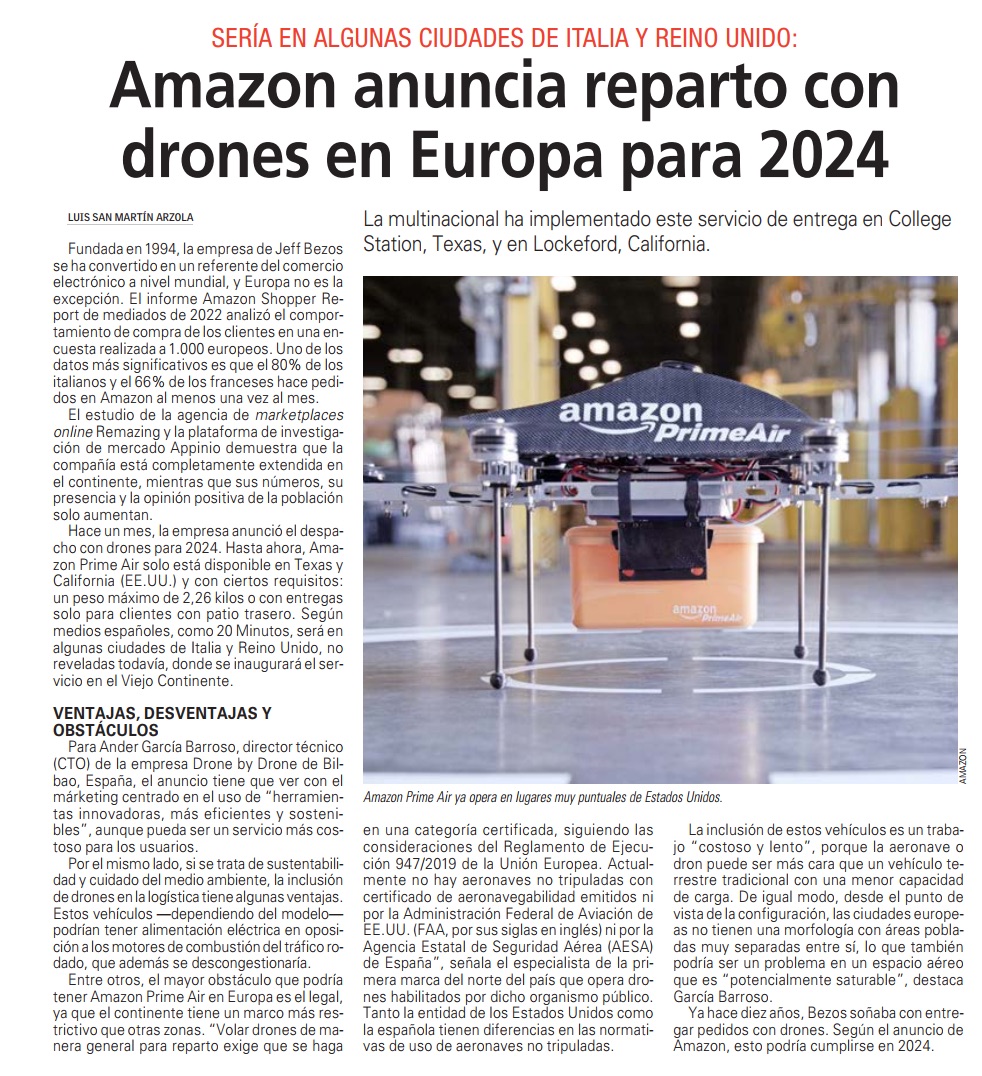The Chilean newspaper 'El Mercurio' has collected the impressions of our CTO, Ander García, regarding the announcement made by Amazon regarding the launch of the delivery service using drones in Italy.
The special edition of Logistics of 'El Mercurio' reflects the responses after the interview with journalist Luis San Martín Arzola, collecting concerns regarding the supposed implementation of the drone parcel delivery service in Italy by Amazon.
'The advantages of starting to deliver with drones in Europe in 2024 will have to be assessed by the distributor. On a social level, environmental advantages and improvements to road traffic come to mind. The first is to have electrically powered drones while the majority of the land mobile fleet continues to use the combustion engine.
It remains to be seen whether the drones use electric motors powered by a battery or a combustion generator, which will depend on the design and model selected.
In my opinion, I think there are several obstacles:
- The first of them is the legal one. Flying drones in general for delivery requires that it be done in a certified category following the considerations of Implementing Regulation 947/2019 of the European Union. Currently there are no unmanned aircraft with an airworthiness certificate issued by either the FAA or EASA. Work is being done on it, and it is an expensive and slow process, so the final product (aircraft) may be more expensive than a traditional land vehicle (purchase) with less cargo capacity.
- Lack of infrastructure in cities to 'receive' packages.
- Lack of development of U-Space that allows the flight of manned and unmanned aircraft in the same place, in a potentially saturable airspace.'
The improvements that this type of services introduce remains to be seen, but there is no doubt that it is an innovative, more efficient and sustainable system. For the moment, these announcements are made solely based on marketing and the impact they generate at the communication level.
At a regulatory level, the FAA and EASA have different regulations for the use of unmanned aircraft, but in this type of operations they should be similar in that they must be carried out following manned aviation standards. The morphology of cities or populated areas could also differentiate operations on both sides of the Atlantic.
You can read the article in the image we attach to the news.


